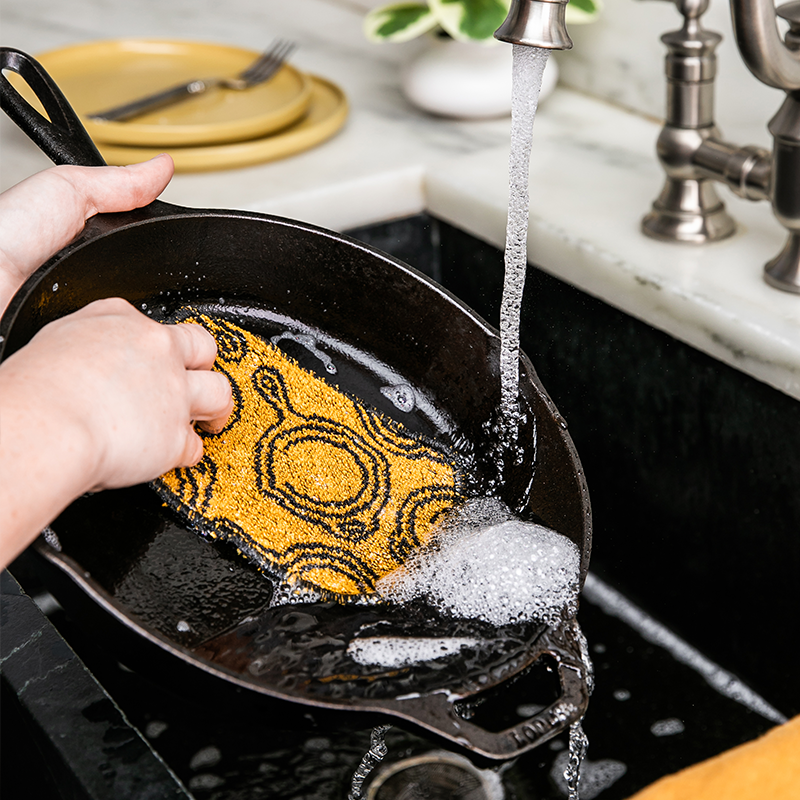
New cast iron pan? Start here!
So you just bought a new cast iron skillet or pan. Now what? Chef Kris Stubblefield walks you through the basics of caring for your new favorite pan.
Clean your Lodge Cast Iron Cookware in three simple steps.
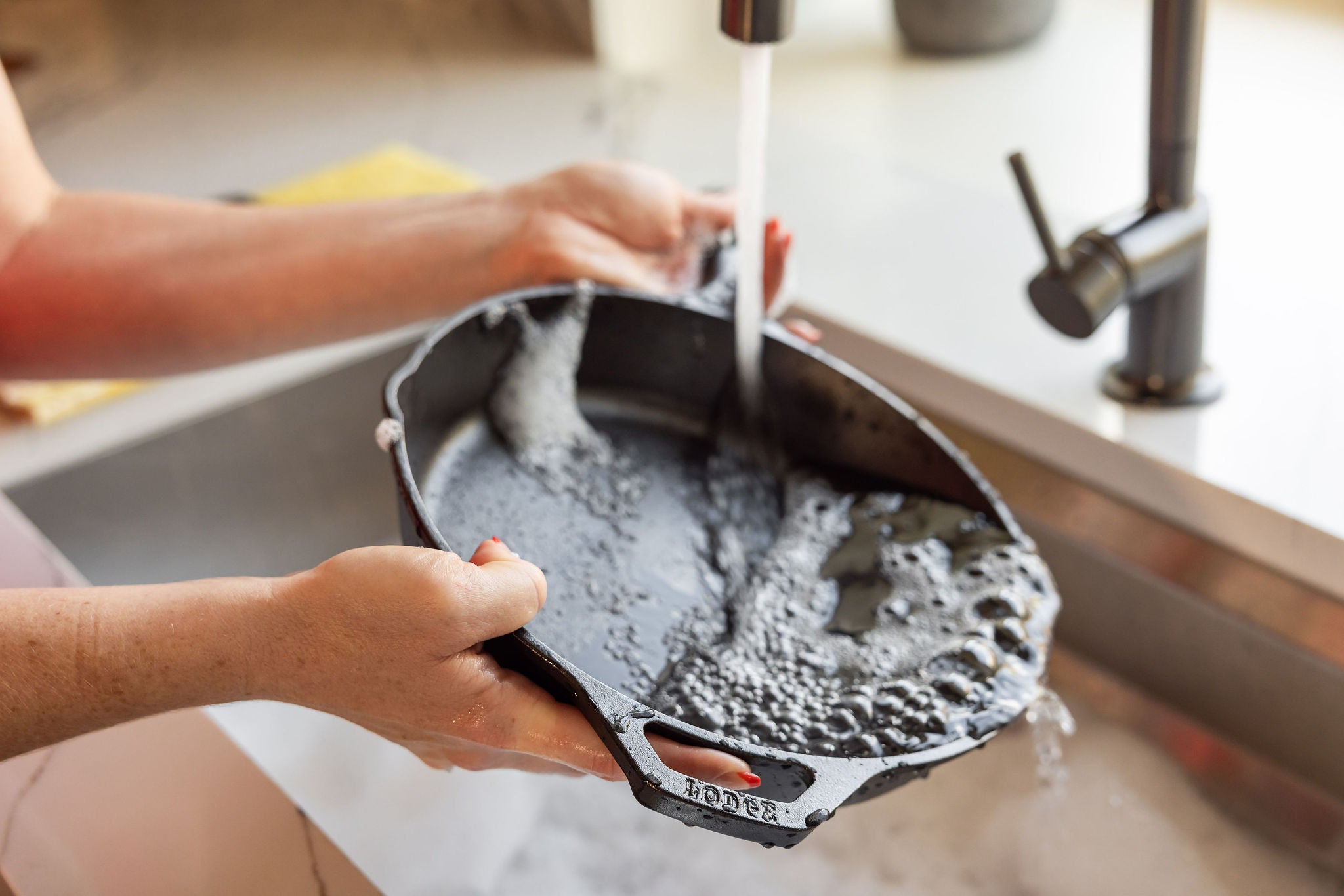
Wash
Start with warm, soapy water and scrub with a stiff-bristled brush or scrubbing pad.
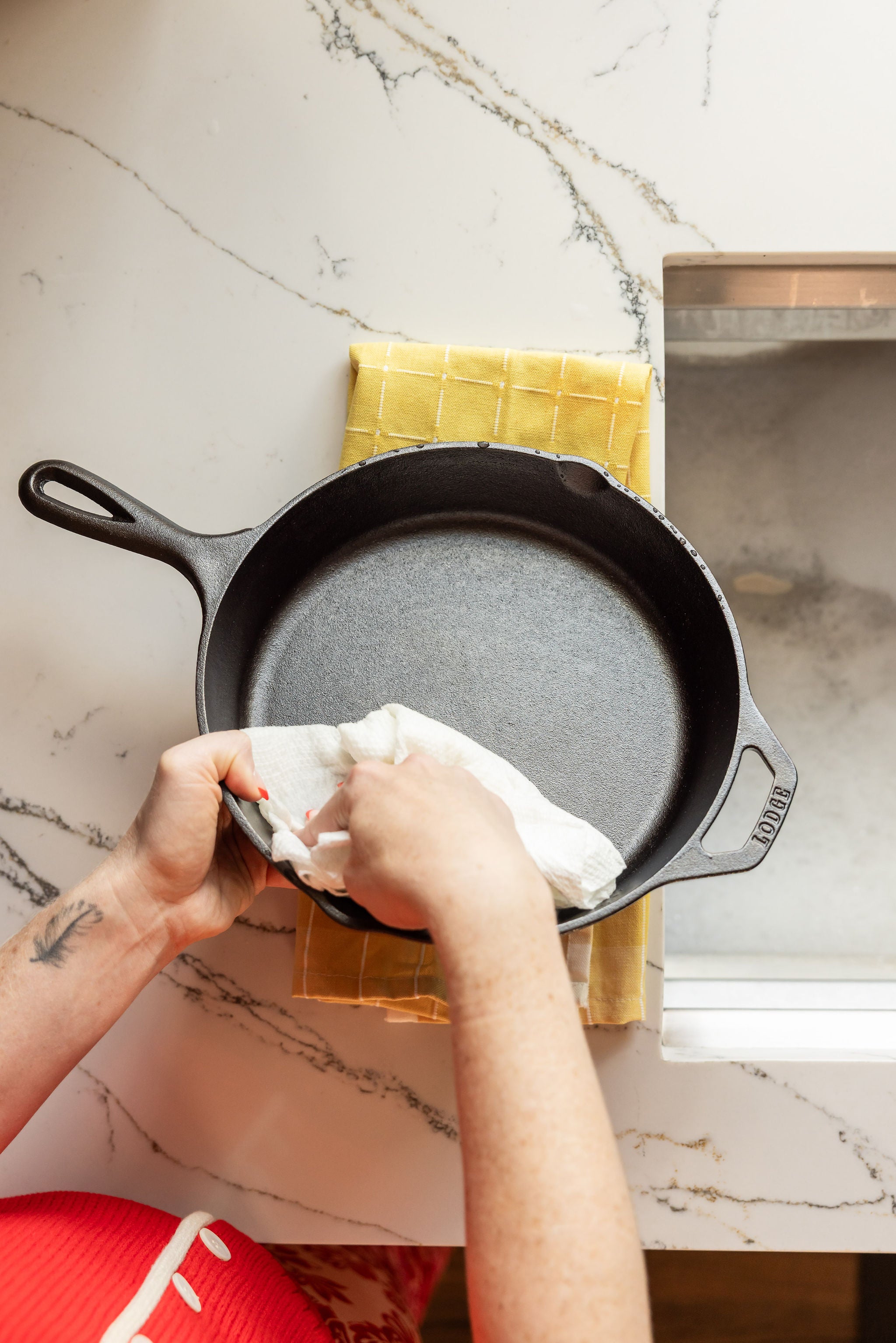
Dry
Dry completely with a paper towel or lint-free cloth.
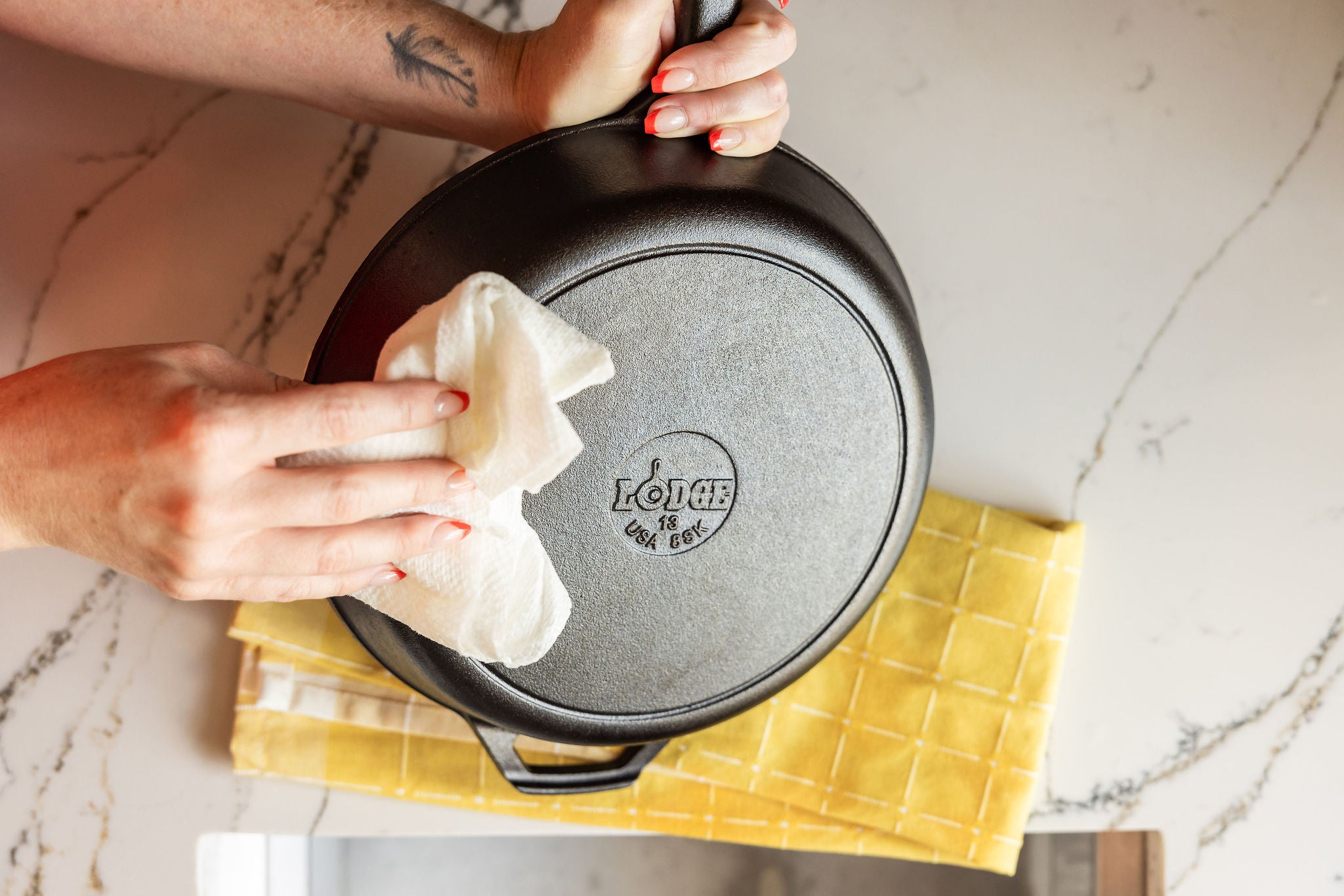
Oil
Add a thin layer of oil, using a paper towel to distribute it over the entire surface.
How to restore a rusty cast iron pan
Don't worry: rust happens to the best of us
Sometimes rust happens and that’s totally okay! If cast iron is left in the sink to soak, put in the dishwasher, allowed to air dry, or left in moisture-prone environments, it might rust. Thankfully, you can fix rust easily at home.
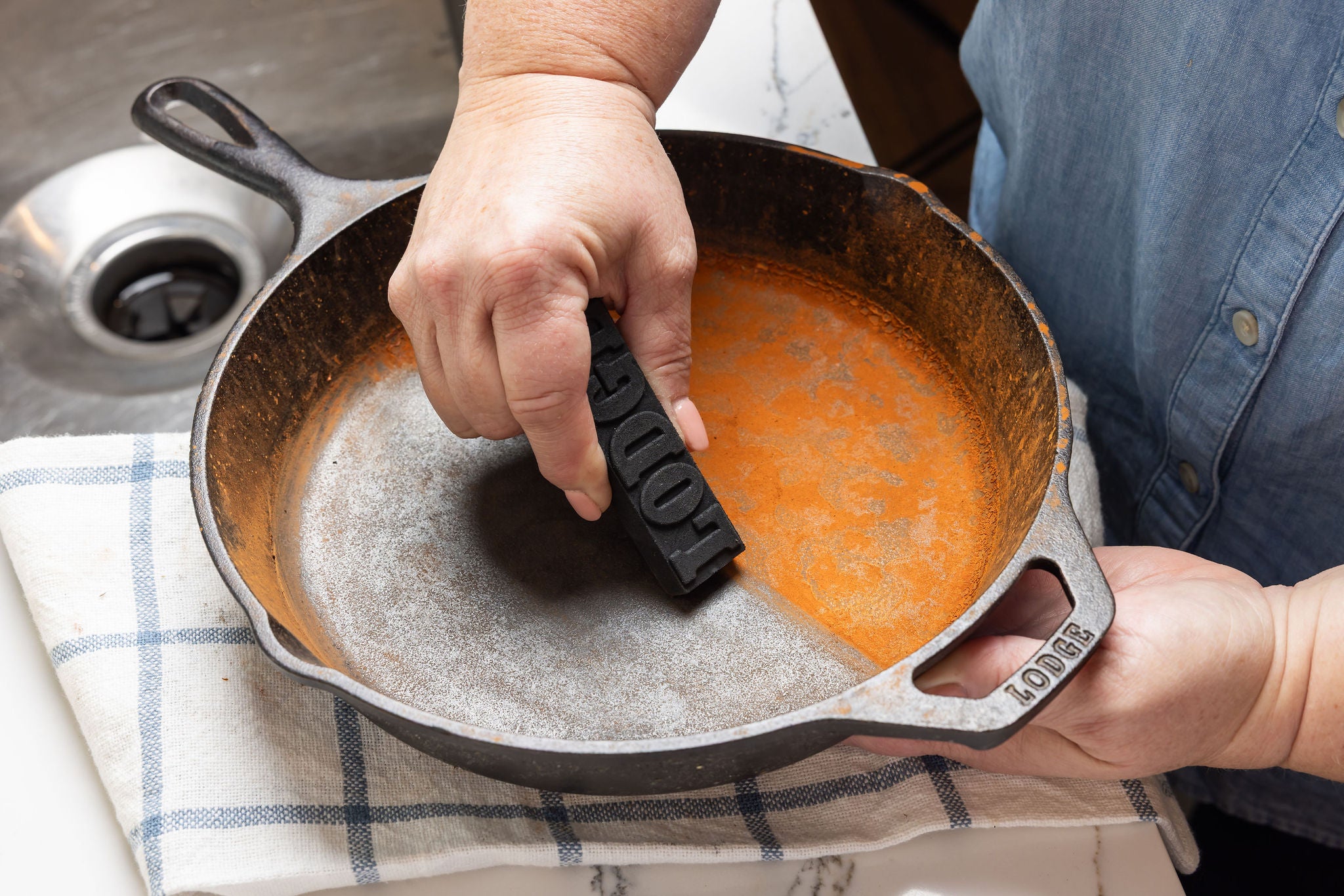
Scour
If you have a Rust Eraser, start with a cool, dry skillet and scour off the rust. Then wash and dry your cookware.
If you don't, reach for a steel wool scrubber. Give your skillet a good scrub in warm, soapy water, focusing especially on areas with rust. Rinse and dry completely.
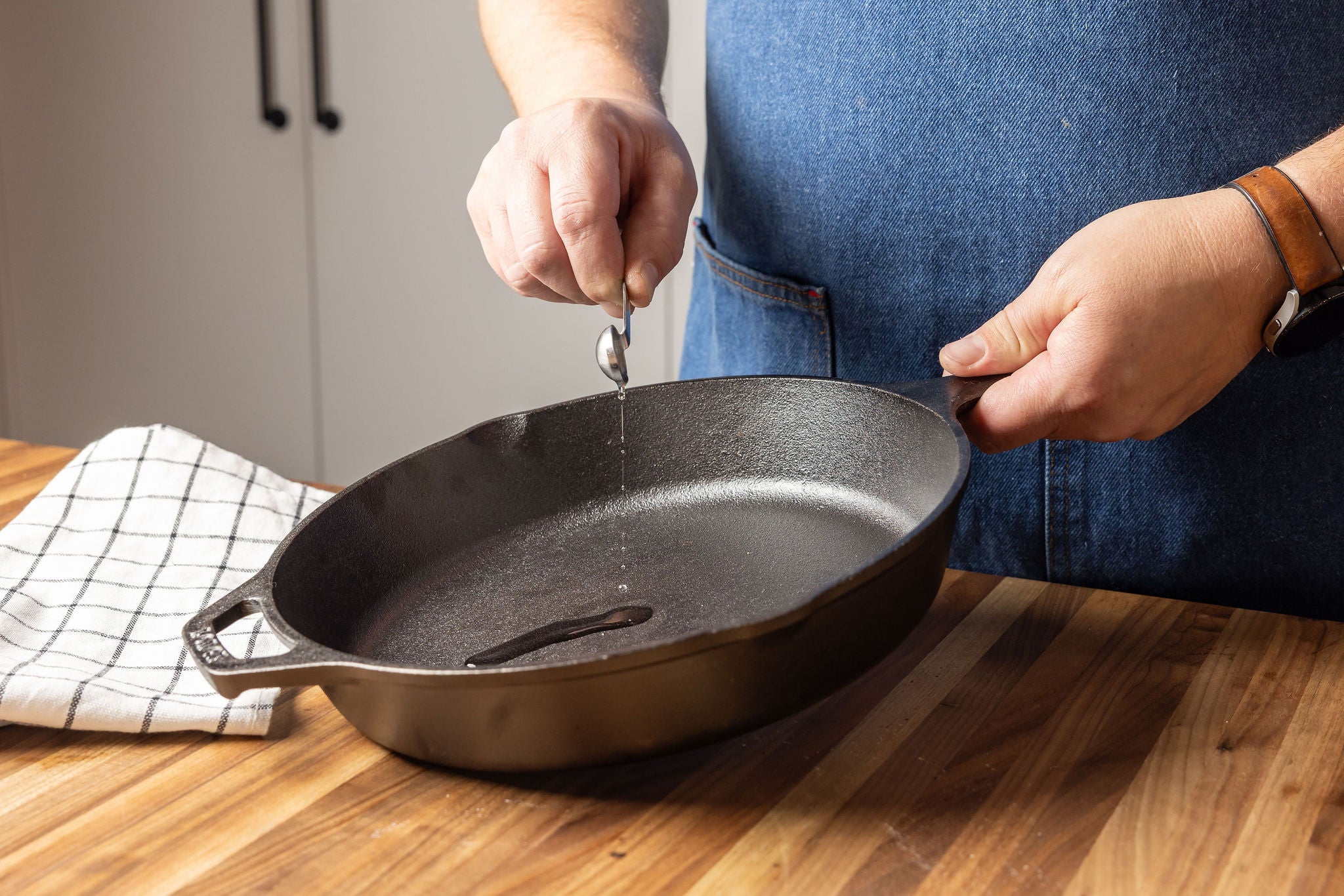
Oil
Apply a very thin, even layer of cooking oil to the cookware (inside and out).
For small amounts of rust, this may do the trick and you're ready to start cooking again! For larger amounts of rust, continue to the third step: reseasoning.
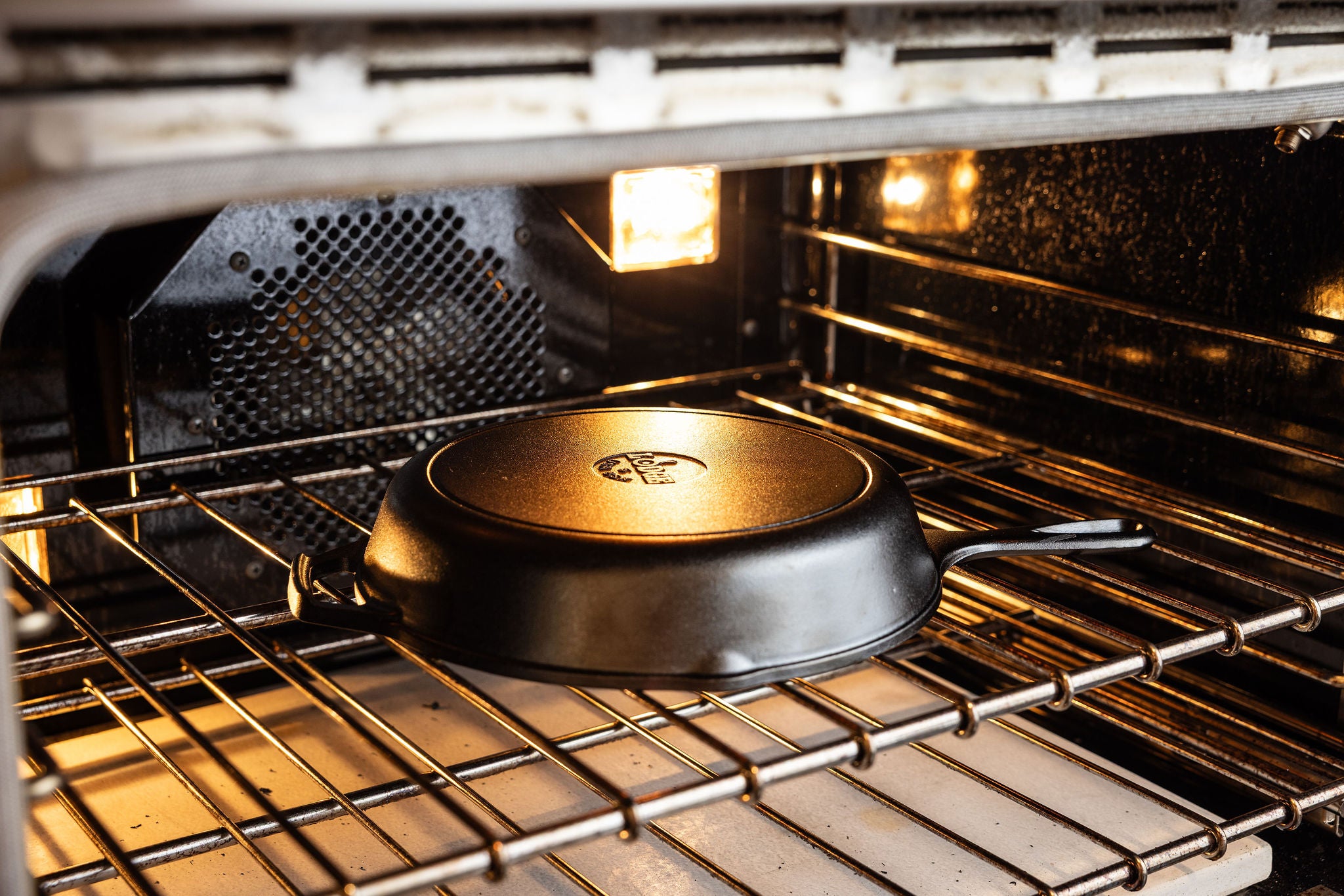
Reseason
Preheat your oven to 450-500°F. Place the cookware in the oven upside down on the top rack and bake for one hour, then allow to cool in the oven.
Discover more about cleaning and care
FAQs
Can I soak my cast iron pan?
No! Soaking cast iron in water is a recipe for rust. For stuck-on food, use a nylon scrubbing brush or a pan scraper and rinse under warm water.
Note: If you do accidentally leave your pan in water for too long and it develops rust, don't panic! Rust can be resolved easily at home.
Can I use soap to wash cast iron?
Soap is totally okay! The soap we use for washing dishes today is no longer strong enough to remove seasoning from cast iron and is an easy way to prevent build up.
Can I use steel wool or a metal scrubber to clean my cast iron?
We don't recommend these tools for daily cleanup, but it's perfectly fine to use steel wool or a metal scrubber to remove rust.
Can I put my cast iron pan in the dishwasher?
No. Our cast iron cookware should be washed by hand. A dishwasher will remove the seasoning and likely cause rust.
